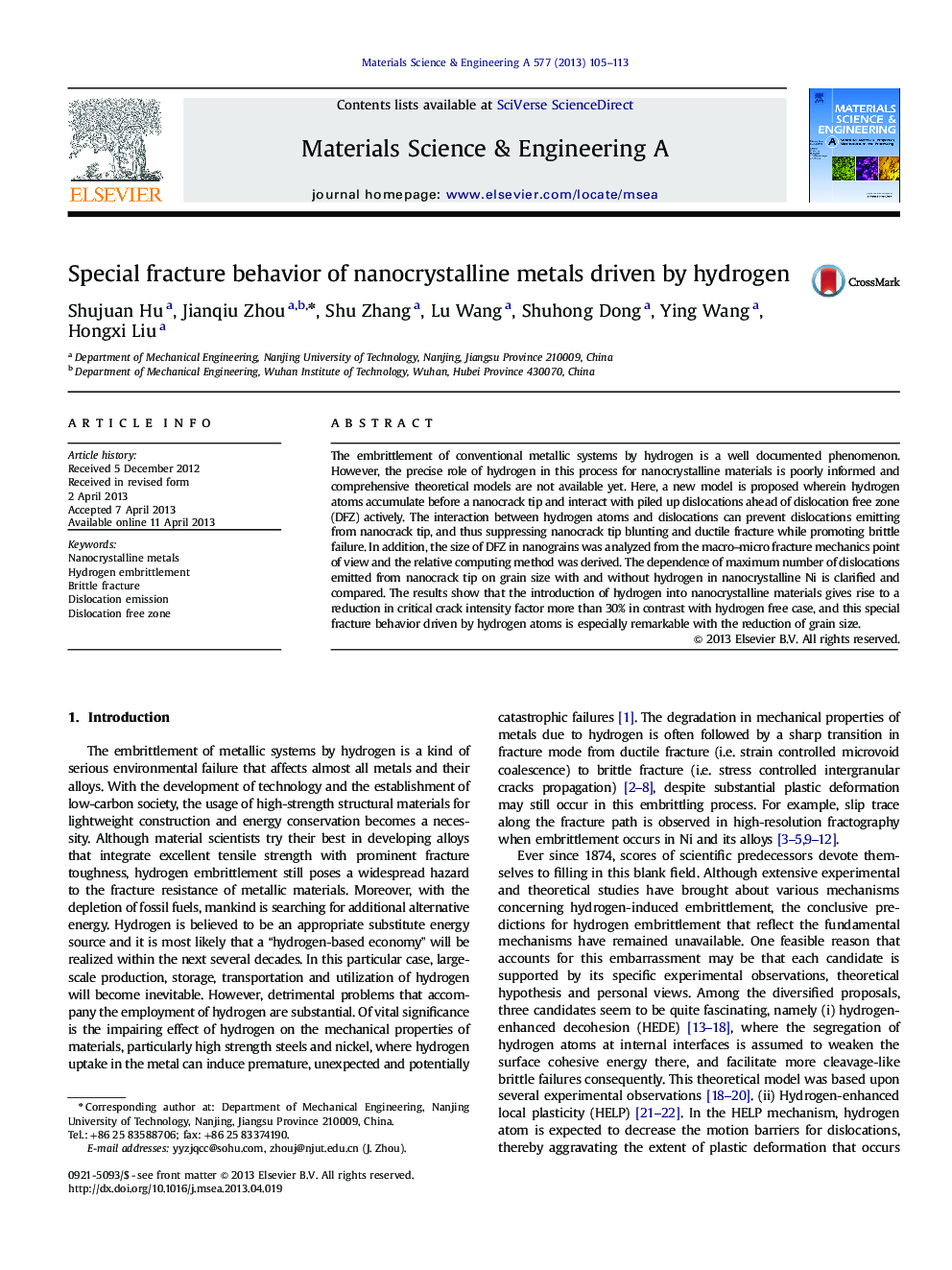| Article ID | Journal | Published Year | Pages | File Type |
|---|---|---|---|---|
| 7982890 | Materials Science and Engineering: A | 2013 | 9 Pages |
Abstract
The embrittlement of conventional metallic systems by hydrogen is a well documented phenomenon. However, the precise role of hydrogen in this process for nanocrystalline materials is poorly informed and comprehensive theoretical models are not available yet. Here, a new model is proposed wherein hydrogen atoms accumulate before a nanocrack tip and interact with piled up dislocations ahead of dislocation free zone (DFZ) actively. The interaction between hydrogen atoms and dislocations can prevent dislocations emitting from nanocrack tip, and thus suppressing nanocrack tip blunting and ductile fracture while promoting brittle failure. In addition, the size of DFZ in nanograins was analyzed from the macro-micro fracture mechanics point of view and the relative computing method was derived. The dependence of maximum number of dislocations emitted from nanocrack tip on grain size with and without hydrogen in nanocrystalline Ni is clarified and compared. The results show that the introduction of hydrogen into nanocrystalline materials gives rise to a reduction in critical crack intensity factor more than 30% in contrast with hydrogen free case, and this special fracture behavior driven by hydrogen atoms is especially remarkable with the reduction of grain size.
Related Topics
Physical Sciences and Engineering
Materials Science
Materials Science (General)
Authors
Shujuan Hu, Jianqiu Zhou, Shu Zhang, Lu Wang, Shuhong Dong, Ying Wang, Hongxi Liu,
